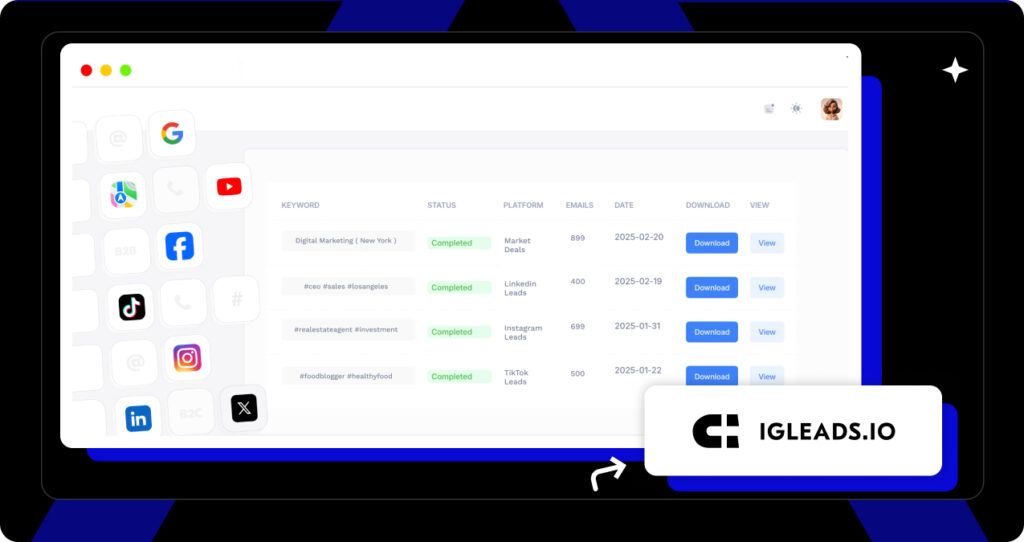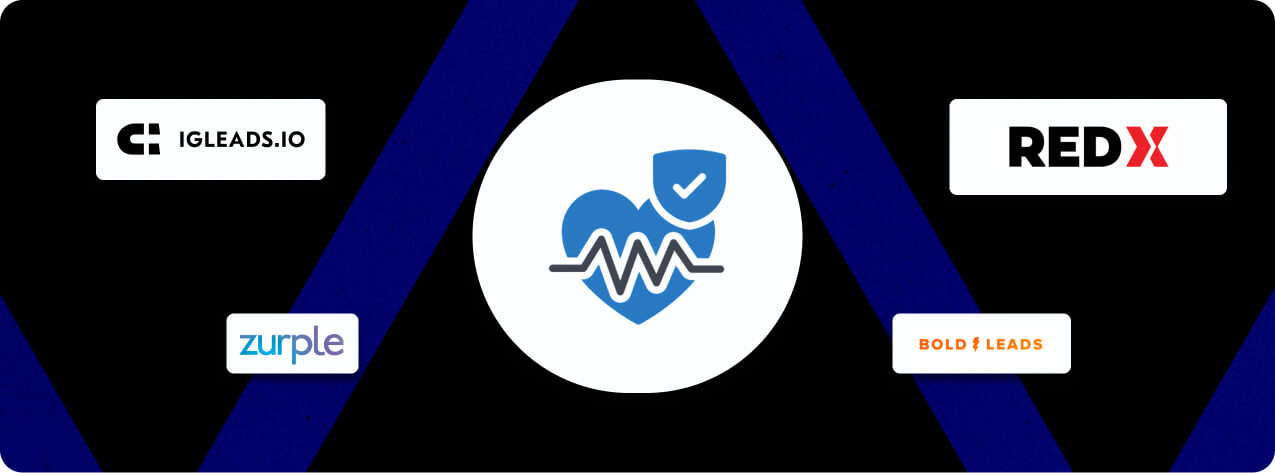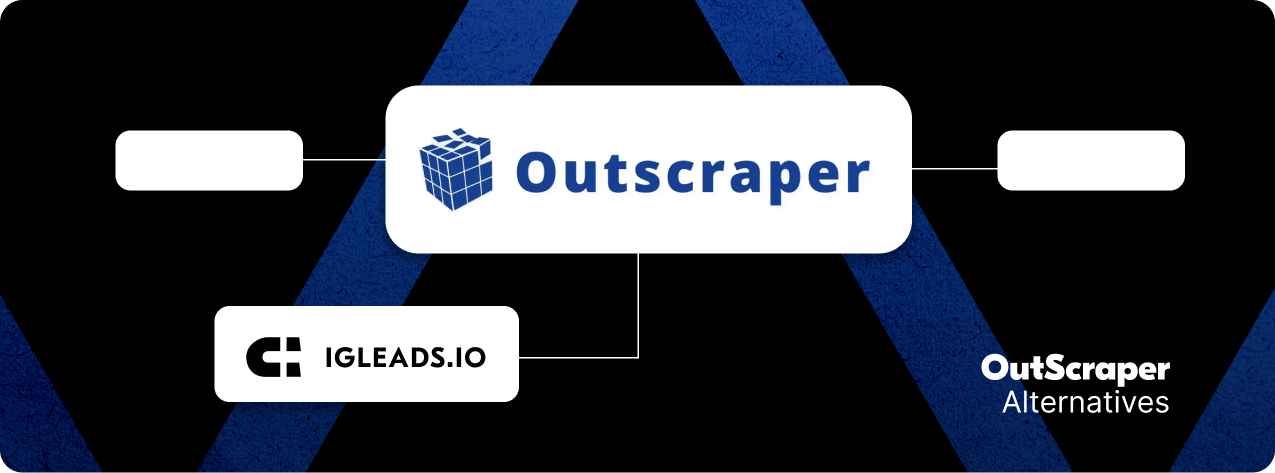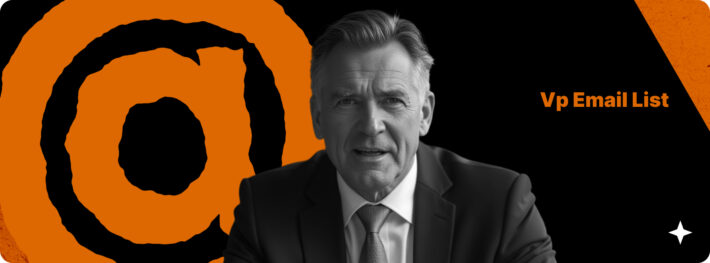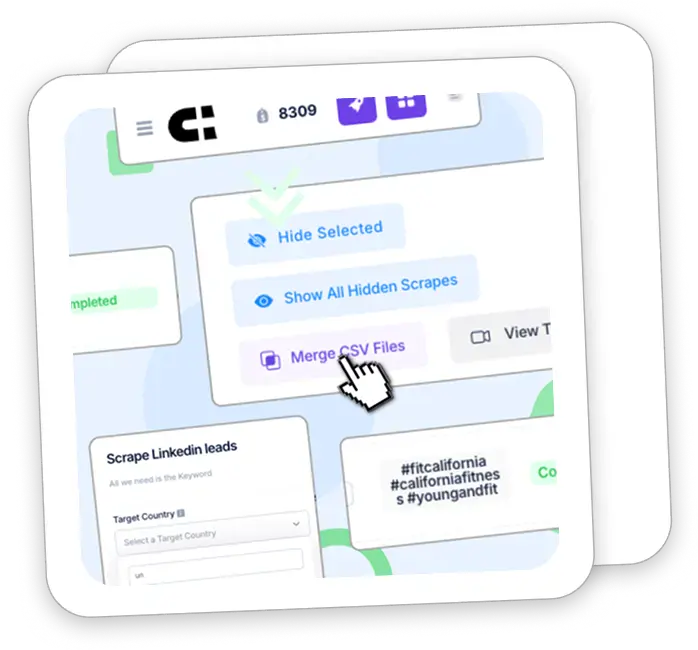Get Fresh Retail Industry Email List 2025
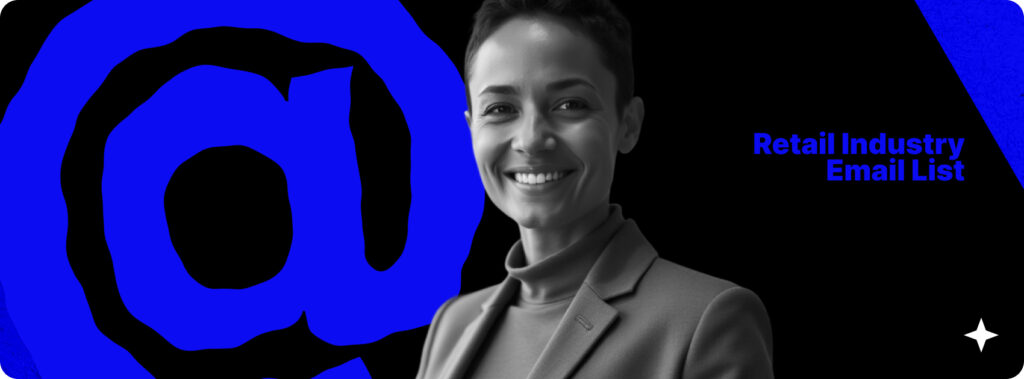
The retail industry moves quickly, and reaching decision-makers at the right time is key. A targeted retail industry email list helps you connect with store owners, managers, and buyers who can drive your sales. Instead of paying for outdated databases, you can build your own using an email scraper that pulls fresh contacts from LinkedIn, Google Maps, and business directories.
Top Ways to Get a Fresh Retail Industry Email List
There’s no shortage of vendors selling prebuilt email lists, but most are filled with stale records and irrelevant contacts. Outdated stores, bounced emails, and generic inboxes are common problems. The smarter approach is to build or extract your own data from reliable public sources. Below are the most effective methods to get a fresh and usable retail industry email list in 2025.
Use professional directories and business platforms
Websites like Crunchbase, Apollo, and industry trade directories include detailed company information and retail contacts. These platforms let you filter by store type, company size, and geography. While many require paid subscriptions, they provide wide reach and segmented data useful for finding retail decision-makers.
What to look for:
- Roles like owner, store manager, category buyer, operations lead
- Filters for retail sub-sectors like apparel, grocery, or electronics
- Export options to move contacts into your CRM or outreach tool
Search LinkedIn with filters and advanced search
LinkedIn is still the most accurate and current source for identifying retail professionals by role, location, and store size. With LinkedIn Sales Navigator, you can go beyond basic search and filter by titles, geography, years in role, and growth trends.
To use LinkedIn effectively:
- Search by titles like Store Owner, Retail Buyer, Category Manager, or Operations Director
- Filter by company headcount or store size depending on your target market
- Build connections before collecting emails or use enrichment to complete profiles
Use scraping tools like IGLeads to extract emails from public sources
The fastest way to build a niche retail list is with scraping tools. IGLeads lets you generate lead lists by extracting role, company, and email data from public sources including LinkedIn, Google Maps, and business directories. You choose your filters, run the scrape, and download a clean CSV of retail contacts.
IGLeads works well for:
- Locating retail businesses in specific cities or regions
- Targeting by industry segment like apparel, home goods, or grocery
- Pulling contact data from both corporate domains and local listings
No coding is required. The tool has a simple interface, so you avoid manual copy-pasting or overpaying for stale databases. You control who you target, how you filter, and how fresh your list is.
Search company websites and staff pages
For smaller, niche campaigns, company websites often list managers, buyers, or leadership bios. Many retail businesses publish contact details on “About Us” or “Team” pages. This method works well for hand-picking strategic accounts.
Best for:
- Enterprise-level retailers or multi-location chains
- Verifying job roles and responsibilities
- Cross-checking with other sources for accuracy
Buy from reputable data providers (with caution)
If you’re pressed for time, you can buy retail contact lists from data vendors. Always choose providers that let you filter by job role, store type, and geography. Avoid bulk marketplaces with unclear sources or promises that sound too good to be true.
What to check before buying:
- How often the list is updated
- Claimed deliverability rates
- Filtering options by role, store size, and location
- Compliance with data privacy regulations
Even with purchased lists, always validate and clean the data before outreach to avoid high bounce rates and protect your sender reputation.
How to Use Your Retail Industry Email List Effectively for Outbound Campaigns
Building a quality retail industry email list is only the start. How you use it will determine whether your outreach leads to new customers, partnerships, or wasted effort. Retail professionals are busy, and many vendors compete for their attention. To stand out, you need focus, brevity, and consistency.
Start with highly targeted segments
One-size-fits-all outreach rarely works. Segment your list by role, company size, and retail category. This lets you speak directly to what matters for that contact.
Examples:
- Store owners at small boutiques may care about affordable supply options
- Category buyers at grocery chains may want competitive pricing and delivery guarantees
- Operations managers at big-box stores may focus on workflow efficiency
Smaller, specific segments mean fewer emails but stronger engagement.
Use short, personalized emails
The best cold emails are under 100 words and focus on value. Avoid attachments and jargon. Personalization should go beyond first name, reference their store type, product category, or regional market.
Basic structure for first outreach:
- A line relevant to their store or role
- Why you’re reaching out (benefit, not pitch)
- A single value statement (save time, cut costs, increase sales)
- Clear call-to-action (reply, quick call, or resource download)
Use a 3 to 5 step sequence
Most contacts won’t reply to your first email. Plan a short sequence spread over 7–10 days, each with a new angle.
Example sequence:
- Day 1: Initial outreach (personalized, clear value)
- Day 3: Reminder with social proof or customer example
- Day 6: Share a short guide or resource
- Day 9: Ask if someone else handles their category or function
- Day 12: Final nudge with a simple “worth a quick chat?”
Offer something of value
Retail professionals are more likely to engage if you share helpful content. This could be a guide on trends, pricing benchmarks, or a simple checklist. Value content builds trust and keeps your brand in mind.
Examples of value content for retail contacts:
- Seasonal sales reports
- Category-specific buying guides
- Case studies showing margin improvements
- Templates for inventory planning or vendor management
Track performance and adjust
Always measure how your emails perform. If open rates are low, test new subject lines. If replies are weak, improve your value proposition. If bounce rates are high, re-scrape and verify your data.
Good targets to aim for:
- 40%+ open rate
- 10–15% reply rate (for targeted segments)
- Under 2% bounce rate
Best Industries and Use Cases for Retail Industry Outreach
Not all retail contacts respond the same way. The value you highlight for a small boutique owner will be different from what matters to a buyer at a nationwide chain. Knowing where your offer fits best will help you focus your efforts and improve results.
Apparel and Fashion Retailers
Apparel stores and chains are constantly sourcing new products, tools, and services to stay competitive. Buyers and managers here are receptive to offers that increase product margins, improve merchandising, or streamline supply chains.
What they respond to:
- Competitive wholesale pricing
- Trend reports and style forecasts
- Inventory management tools
Use case examples:
- Reaching boutique owners with niche apparel supplier offers
- Targeting category managers at fashion chains with sourcing software
Grocery and Food Retail
Grocery stores operate on tight margins and value efficiency. Decision-makers here prioritize cost savings, supplier reliability, and operational support.
What they respond to:
- Delivery and logistics solutions
- Food safety compliance tools
- Shelf management systems
Use case examples:
- Connecting with buyers at regional grocery chains for supply partnerships
- Offering operations managers workflow or POS automation
Home Goods and Furniture
This sector includes independent shops and larger regional retailers. Contacts are often looking for quality suppliers, product differentiation, and reliable inventory systems.
What they respond to:
- High-margin product lines
- Vendor-managed inventory solutions
- Customer experience enhancements
Use case examples:
- Pitching home décor vendors to small furniture outlets
- Supplying ERP or POS solutions to multi-location home goods chains
Consumer Electronics
Electronics retailers need tools and partners to keep up with fast-changing products and consumer demand. Decision-makers want speed, supply chain visibility, and technical support.
What they respond to:
- Distribution partnerships with strong support
- Warranty and after-sales service solutions
- Tools that track stock and demand shifts
Use case examples:
- Reaching electronics buyers with distribution agreements
- Offering SaaS tools to regional tech retailers for inventory tracking
Specialty Retail and Franchises
Specialty shops and franchise outlets often have more autonomy than big-box chains. These contacts are interested in solutions that help them compete locally.
What they respond to:
- Marketing automation tools
- Loyalty programs and customer engagement platforms
- Local sourcing opportunities
Use case examples:
- Pitching digital marketing services to regional franchise owners
- Supplying CRM and loyalty tools to specialty stores
Tips for Keeping Your Retail Industry Email List Clean and Updated
Even the best retail industry email list will lose value if it isn’t maintained. Store managers change roles, buyers move companies, and shops open or close every quarter. A list that isn’t refreshed regularly will quickly deliver more bounces than replies.
Schedule regular re-scrapes
With IGLeads, you can re-run scrapes monthly or quarterly to refresh your retail contacts. Because the data comes from public sources in real time, updates capture job changes, new store openings, and current contact details without starting from scratch.
Monitor deliverability honestly
Purchased databases often promise higher deliverability because they filter heavily. IGLeads won’t match that one-to-one, but it makes up for it with recency and volume. Use an email verification tool alongside your scrapes to remove bad addresses and keep bounce rates below 2 percent.
Remove inactive contacts
Even verified emails can go cold. If someone hasn’t opened or clicked after several campaigns, it’s better to drop them. Trimming unengaged contacts keeps your sender reputation strong and your performance metrics realistic.
Track role and company changes
Retail has high turnover. When buyers, managers, or owners move on, their replacement may be just as valuable. Re-scraping ensures you catch these updates and keep your outreach aligned with real-world changes.
Stay compliant
IGLeads only pulls from public sources, but compliance is still your responsibility. Always honor unsubscribe requests, avoid private data, and include an opt-out link in your campaigns.
Real-World Examples of Companies Succeeding With Retail Outreach
Plenty of B2B companies have grown quickly by targeting the retail sector with clean, accurate lists and well-structured campaigns. Here are a few anonymized examples showing how fresh data and focused outreach can deliver results.
SaaS platform for inventory management
A SaaS provider built a retail industry email list of 3,000 independent store owners and operations managers using LinkedIn filters and IGLeads. They ran a four-step outreach sequence focused on reducing stockouts and improving cash flow.
Results:
- 15 percent reply rate
- 120 demos booked
- $450,000 pipeline created in 90 days
Key to success:
- Clear value proposition tied to retailer pain points
- Targeted list segmented by store size
Marketing services agency for fashion retailers
A boutique agency wanted to expand into apparel. They scraped 2,500 buyers and category managers from Google Maps and LinkedIn, segmented by metro area. Their campaign offered local SEO and digital advertising packages.
Results:
- 40 discovery calls booked in six weeks
- 12 new retainer clients signed
- Consistent pipeline growth in a competitive niche
Key to success:
- Geographic targeting for localized relevance
- Messaging tailored to fashion buyer challenges
Wholesaler breaking into grocery
A food wholesaler used IGLeads to scrape 1,800 grocery buyers across three states. Their outreach sequence shared case studies on supply reliability and pricing flexibility.
Results:
- 10 percent reply rate
- 8 distribution contracts signed
- Expanded into 150 new stores in under six months
Key to success:
- Focus on reliability and margin improvements
- Clean data refreshed quarterly for accuracy
What to Do Next With Your Retail Industry Email List
Having a fresh retail industry email list is just the starting point. The real impact comes from how you use it. A poorly planned campaign will waste even the best data, while a structured approach can turn a small list into major revenue.
1. Segment your contacts
Group your list by role (store owners, buyers, category managers), company size, or region. Each segment has different priorities — buyers want better margins, while owners may care more about operations or foot traffic.
2. Keep your emails short and clear
Retail professionals are busy. Aim for fewer than 100 words per email. Focus on the outcome you can deliver: saving time, boosting sales, or reducing costs. End with one clear call to action.
3. Use an outreach sequence
Don’t stop after one email. Plan a 3–5 step sequence spread over 7–10 days. Each follow-up should add value — a case study, testimonial, or quick insight relevant to retail.
4. Track performance closely
Monitor open rates, reply rates, and bounces. If open rates are low, test new subject lines. If replies are low, refine your value proposition. Use early results to improve quickly.
5. Refresh and clean regularly
Retail roles shift often. Re-scrape or verify your data every month or quarter. Remove inactive contacts and track job changes to keep your outreach relevant.
6. Stay compliant
Always include an unsubscribe link, document your sources, and never use private or non-permissioned data. Retailers are quick to dismiss outreach that feels shady, but respect matters.
Build Your Retail Industry Email List the Smart Way
Did we convince you that building your own retail industry email list is worth it? With IGLeads, you don’t need coding skills or complicated setups. Just choose your filters, run the scraper, and export clean, accurate contacts in minutes. That means no more wasting money on stale databases or bloated lists that don’t convert.
Start fresh, stay in control, and reach the right retail professionals today.
Essential Guides for Lead Generation
- B2B Lead Generation Solutions – Guide for 2025
- How to Build a High-Quality B2B Email List for Outbound Marketing
- Buy Email Lists for Marketing in 2025: Complete Guide to Business Leads
- Why Scrape Google Maps? Use Cases for Sales, Marketing & SEO
- B2C Lead Generation: The 2025 Playbook
- 15 Best Lead Generation Companies for 2025
- Best B2B email list providers in 2025
- Top Lead Generation Agencies Compared (2025)
- 18 Best B2B Lead Generation softwares in 2025
- Lead Generation Guide: Strategies & Tools for 2025
Frequently Asked Questions
It’s a collection of contact details for retail professionals such as store owners, buyers, merchandisers, and category managers.
Use tools like IGLeads to scrape data from public sources such as LinkedIn, company sites, and Google Maps.
Yes, as long as you use publicly available data and follow email compliance laws such as GDPR and CAN-SPAM. Always provide an opt-out option.
At least every 1–3 months. Roles in retail change often, and regular re-scraping ensures your data stays accurate.
Purchased lists are often outdated and overpriced. IGLeads lets you build fresh, targeted lists in real time, filtered by location, role, or company size.
